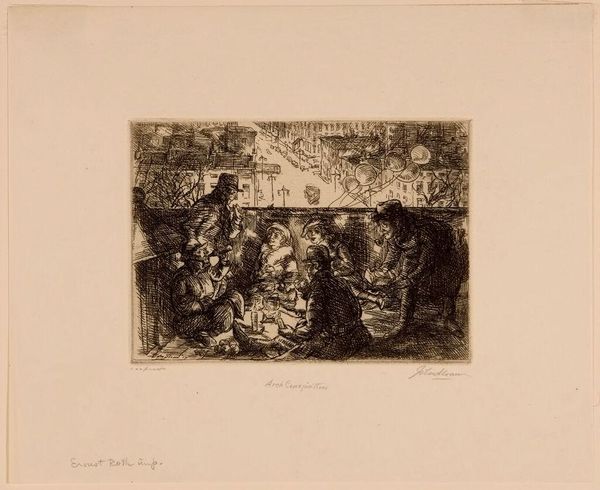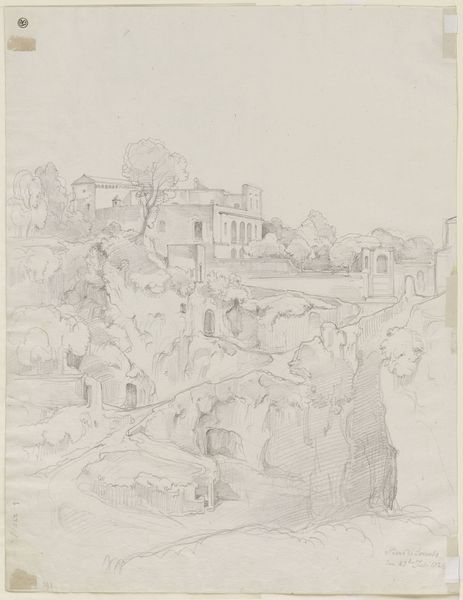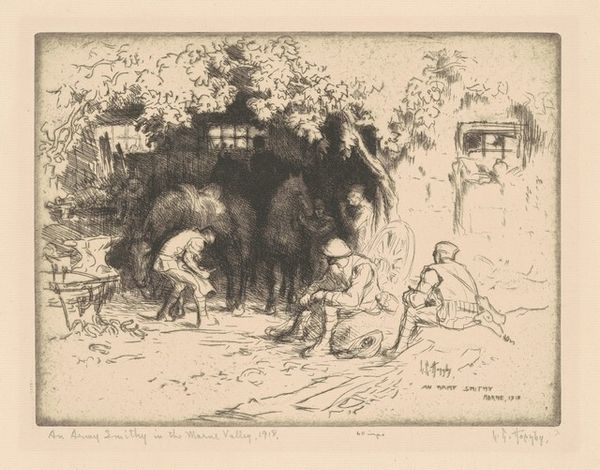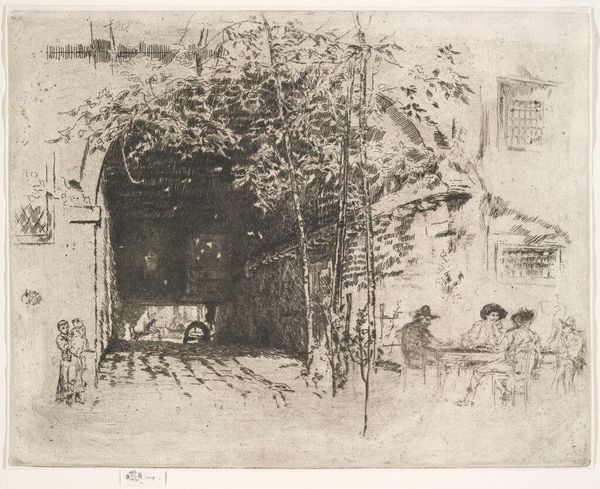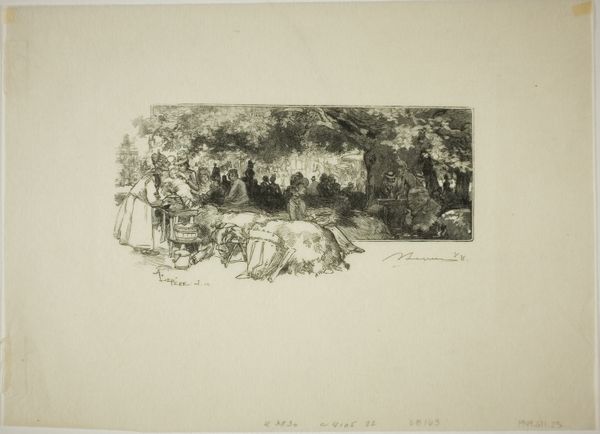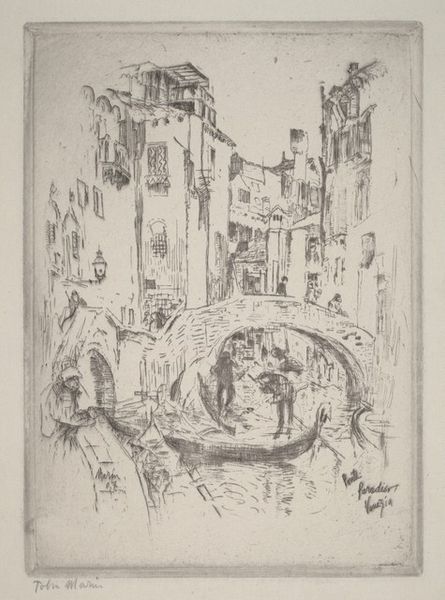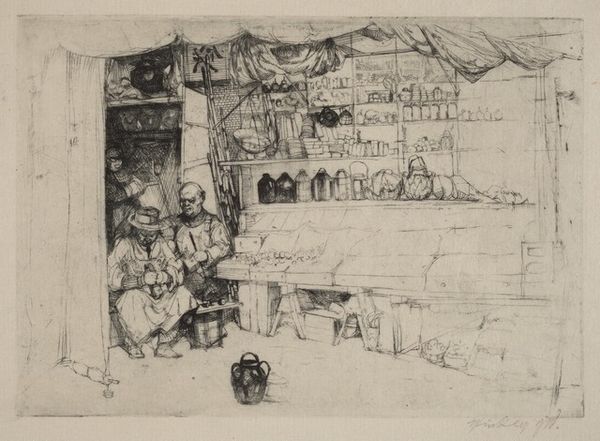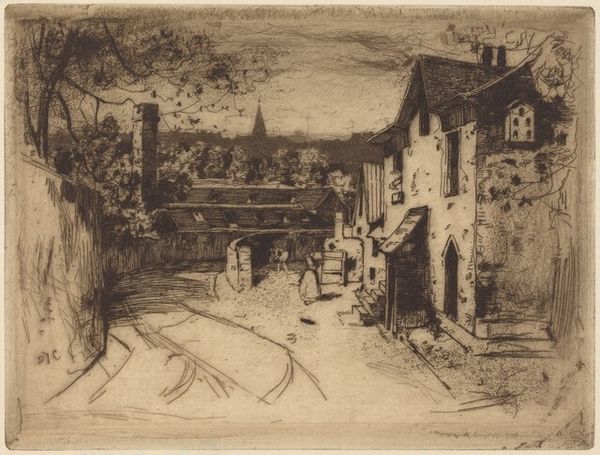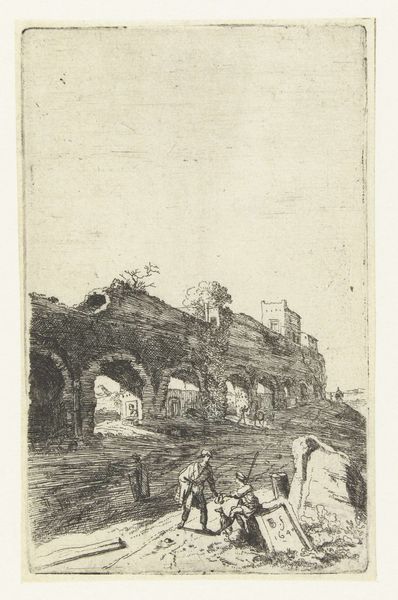
drawing, print, etching, ink
#
drawing
# print
#
etching
#
landscape
#
ink
#
orientalism
#
genre-painting
#
realism
Copyright: National Gallery of Art: CC0 1.0
Curator: Let's discuss "Gunsmiths, Tetuan," an etching and ink print by James McBey, created in 1912. Editor: My first impression is one of immense cultural density, veiled in sepia tones and textural intricacy. It appears almost like a faded memory, bustling with life, but filtered through a lens of distance and perhaps, Orientalist gaze. Curator: Indeed, the composition is fascinating. The eye is drawn through a dense foreground to a bustling town square. Notice how the artist uses delicate lines to build depth and atmosphere, layering the scene to emphasize a bustling narrative in the mid-ground. Editor: I'm compelled to question what narratives are constructed and reinforced here. The depiction of the ‘orient’ as inherently chaotic and timeless was a common trope during this period, which McBey perpetuates through a Western perspective—a bustling, crowded space of weapon-making and marketplace commerce in this northern Moroccan city. The very title "Gunsmiths," implies both a profession and possibly political tensions. Curator: It's true; however, let us also admire McBey's technique. The tonal range is subtle yet effective. Look at the masterful way he renders the light filtering through the foliage at the top, compared to the darker foreground figures that offer a grounded frame. Editor: I acknowledge his artistic skills but cannot detach it from the prevailing societal attitude in the work’s narrative. It encourages the viewer to interpret the Moroccan community through the eyes of early 20th century British culture. Are we truly seeing Tetuan, or an exoticized construction for a European audience? Curator: A vital question that brings historical consciousness to visual formalism, a perspective allowing for nuanced discussion in today’s context. Editor: Yes, by confronting the ethical implications in Orientalist art, and its complicated beauty, we grow aware of past narratives and our present interpretations.
Comments
No comments
Be the first to comment and join the conversation on the ultimate creative platform.

